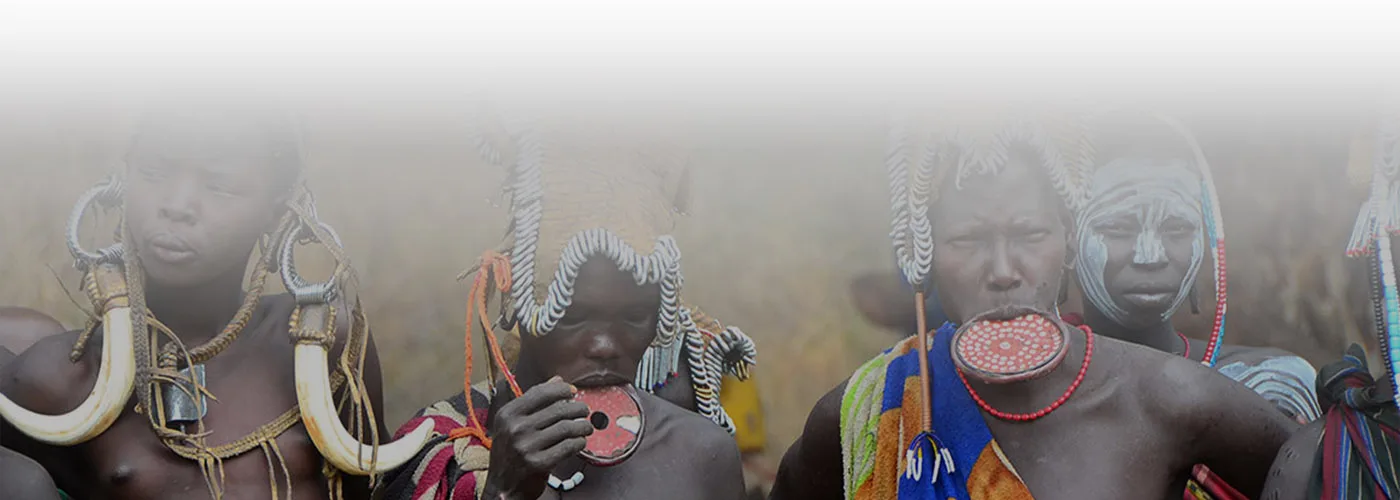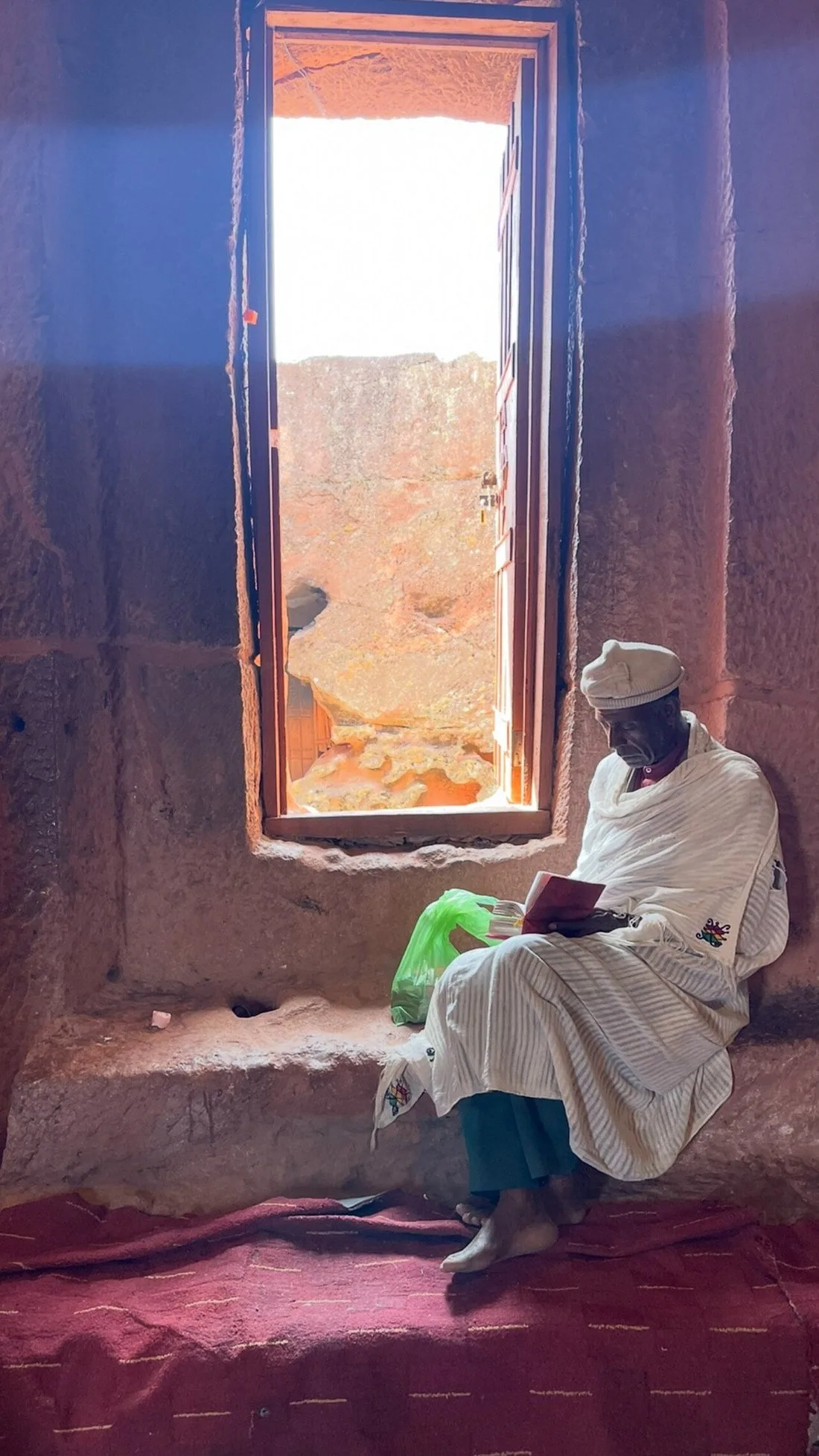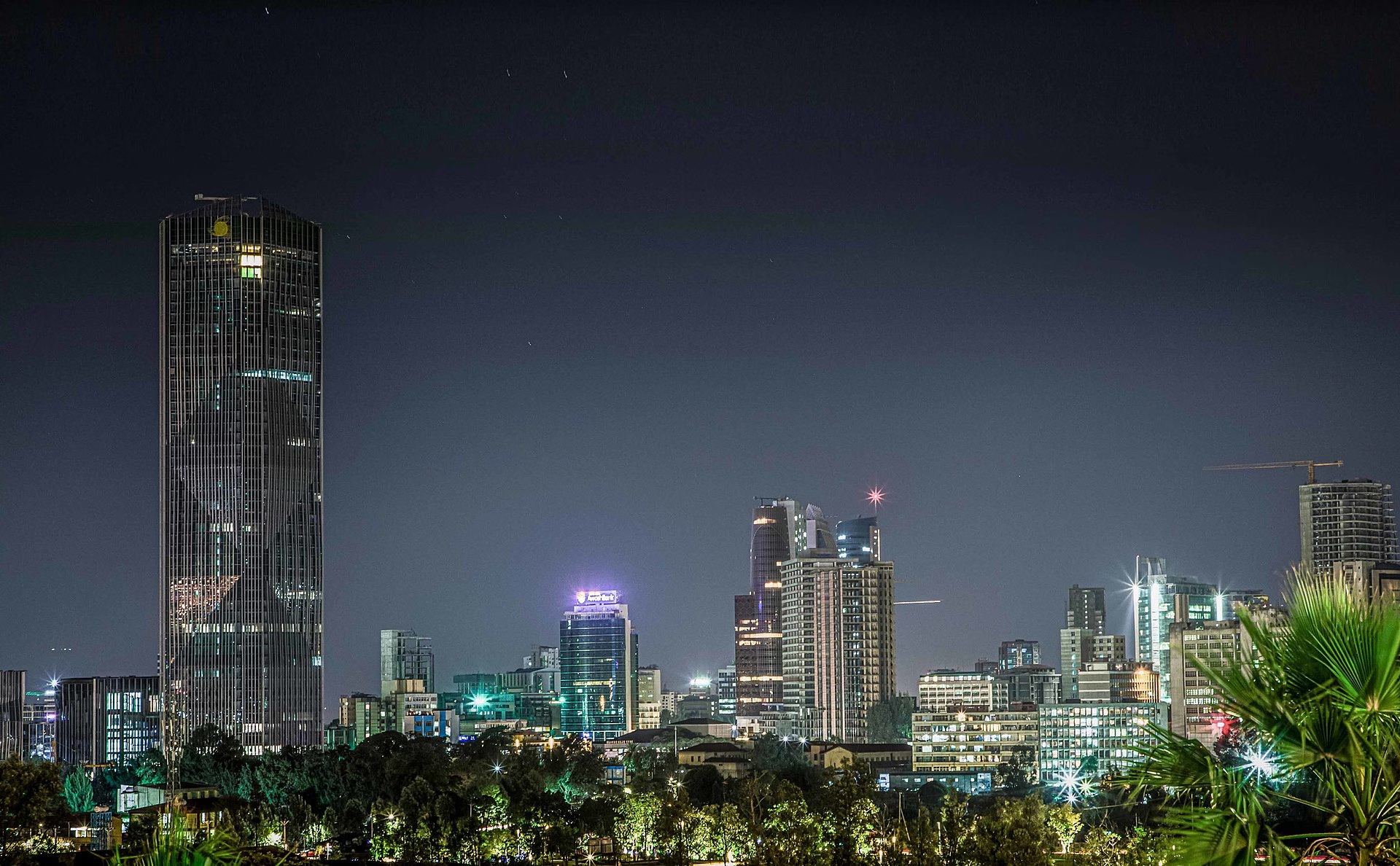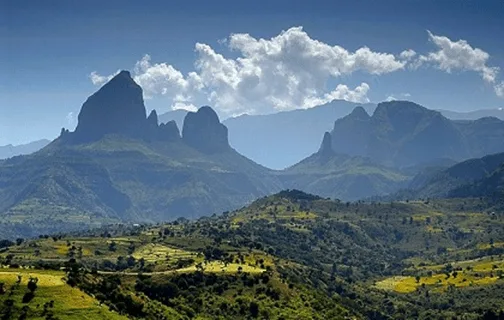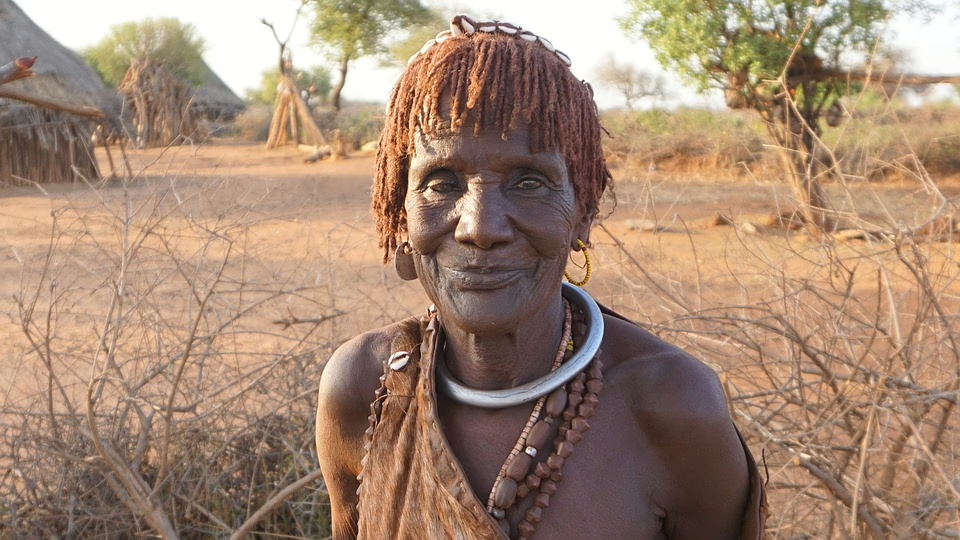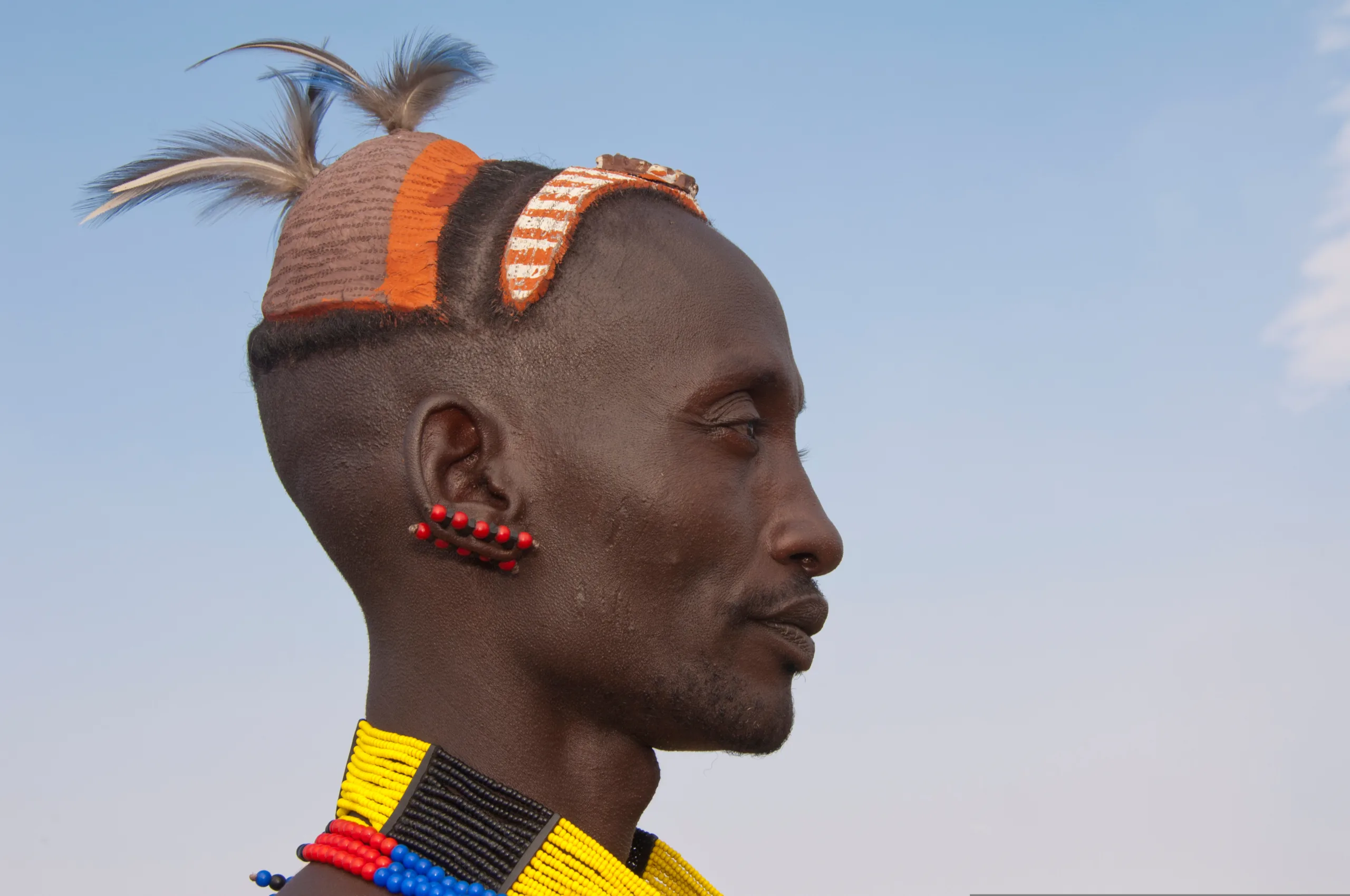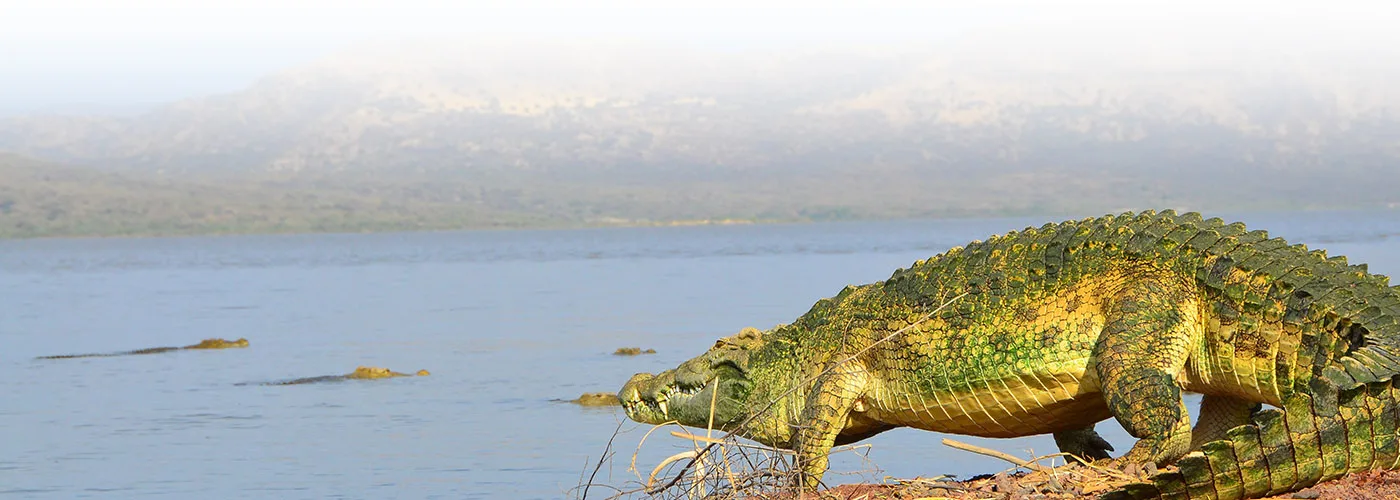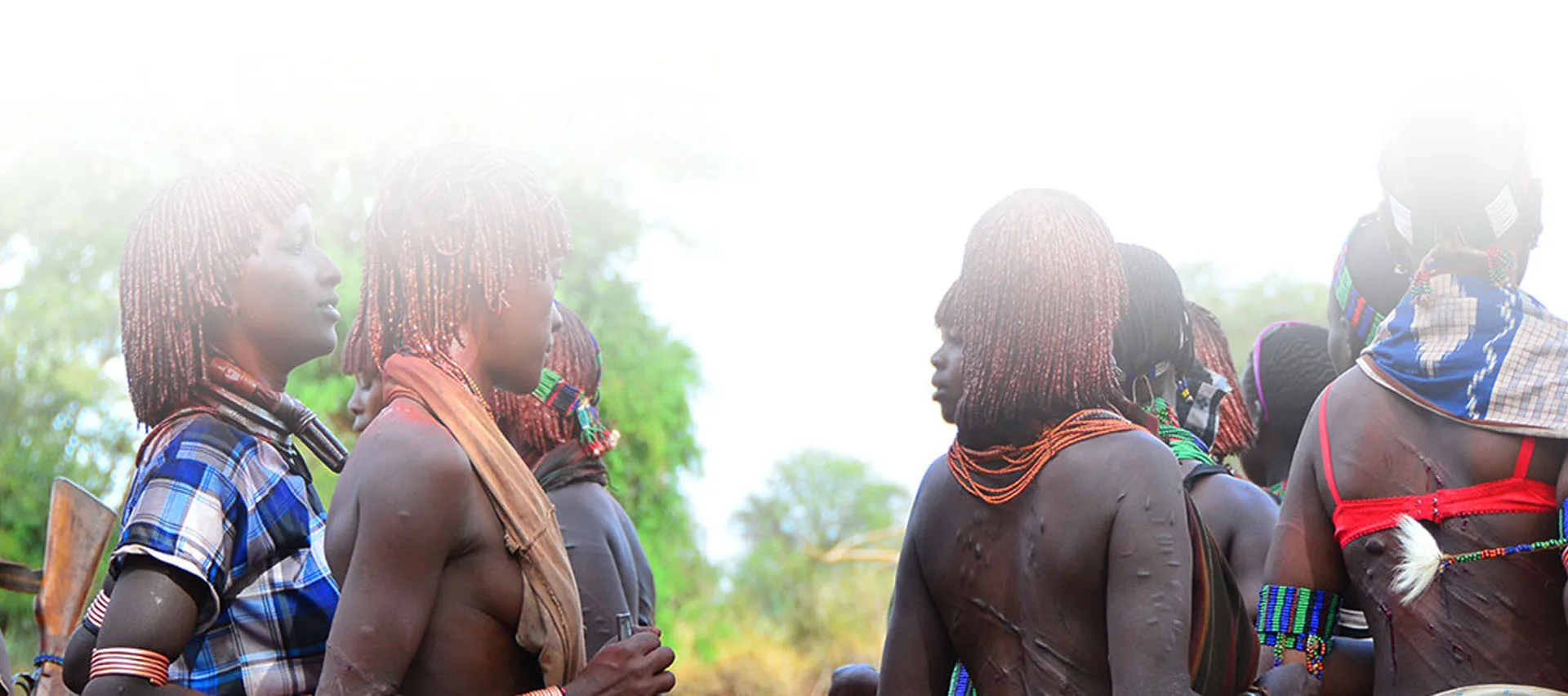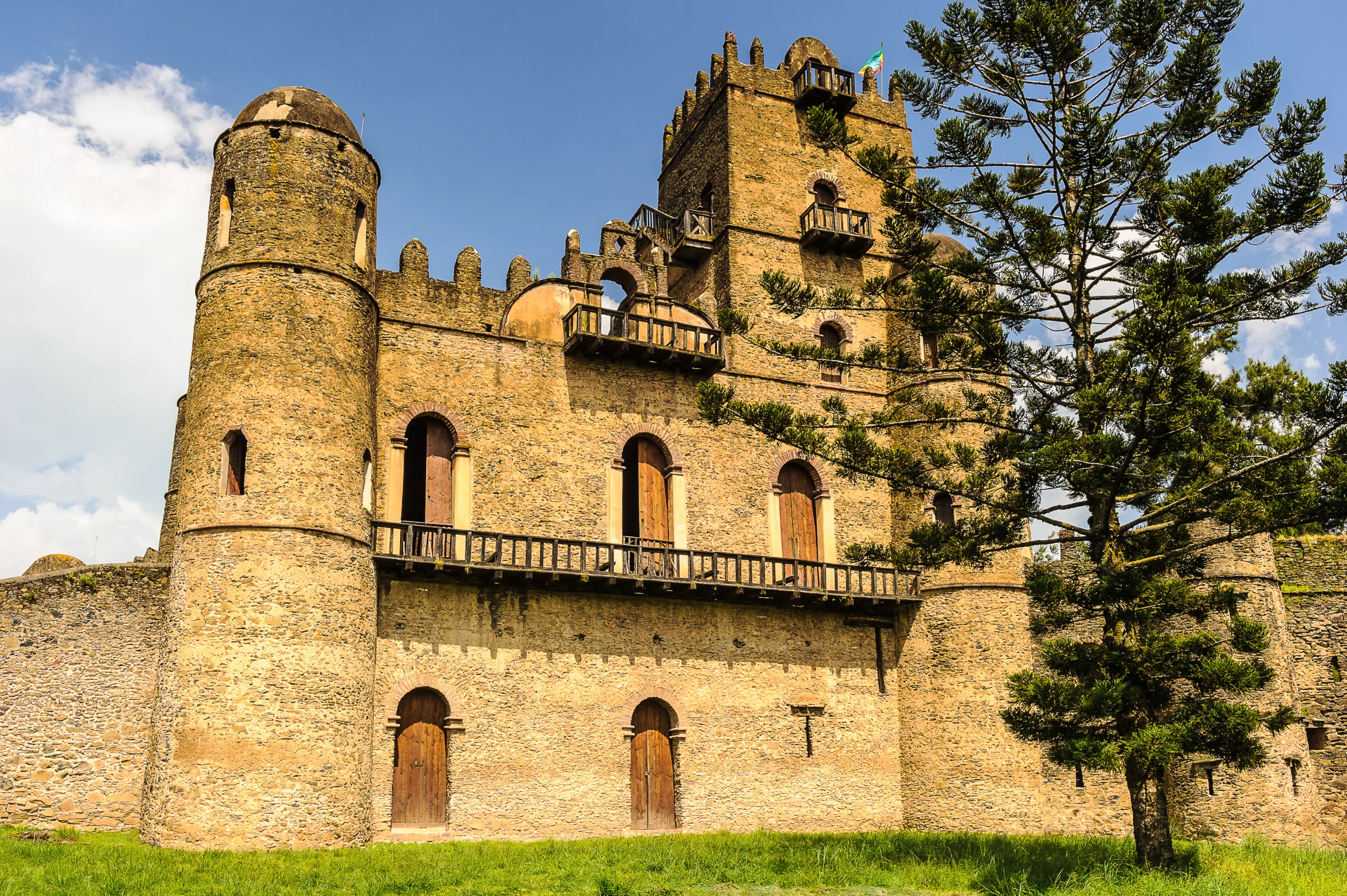
Arrival and Addis Ababa City Tour
On arrival in Addis Ababa you will be met at the airport and transferred to the hotel. Addis was founded in 1886 by Menelik II, and situated at an elevation of around 2438m which makes third highest capital city in the world. Addis Ababa enjoys an excellent climate all year round, with an average temperature of 25°C. we will start our site-seeing by National museum which houses some of the country’s historic treasures. The collection of fossils and bones of early hominids discovered in Ethiopia include the 3.5 million year old remains of ‘Lucy’, the oldest hominid every found. Proceed visiting to the two major highlights of the city, the Ethnographic Museum and the church of the Holy Trinity, Ethiopia’s main cathedral and home to the remains of the last emperor, Haile Selassie.
Fly to Bahir Dar
Today we fly north to Bahir Dar, capital of the Amhara region situated on the shores of Lake Tana, the largest lake in the country. Bahir Dar is one of the best well-planned cities in Ethiopia. This morning we take a boat trip on the lake to learn the secrets held by the monasteries and churches on the islands. We will visit Ura Kidane Mihret church on Zeghie peninsula. Under the thatched roof are some distinctive colorful paintings of religious scenes, and an impressive display of illuminated bibles written in Ge’ez, the religious language from which Amharic is derived.In the afternoon we will visit Tississat Falls, Amharic for ‘water that smokes’ located about 32km south of Bahir Dar. Due to a nearby Hydro Electrical power scheme, the waterfalls sometimes can not be guaranteed to be in full force.
Drive to Gondar (UNSCO – World Heritage Site)
This morning we drive for the 3 Hour (185km) north to Gondar, the former capital of Ethiopia. Gondar has now become one of Ethiopia’s largest and most impressive cities, with its walled Royal Enclosure. Gondar’s most famous monuments are its exceptionally well preserved 17th century castles. The largest and best is that of King Fasilidas. It is a stone-built construction with round turrets and wooden balconies. The king also built a remarkable bath a mile or so outside of town known as the ‘Pavilion of Delight’. The Bathhouse of Fasil at which thousands of Ethiopians celebrate Timkat festival every January. This whole complex of buildings is unique in Ethiopia and unlike anything found elsewhere in Africa. This afternoon we’ll also make a visit to the Debre Birhan Selassie church (Light of Trinity) with its sensational angelic ceiling and mural.
Excursion to the Simien Mountains (UNESCO – World Heritage Site)
After breakfast we drive to Debark on the edge of the Simien Mountains. In the late morning we drive up into the mountains for some spectacular views of this unique ecosystem. We take an optional 1.5hr walk, mostly flat or downhill, and we will see the Endemic Gelada baboons, Klipspringers,Lammergeyer vultures, and bushbuck. The scenery is truly breathtaking and there will be time for a walk around the Sankaber region of the National Park.The maximum altitude we reach is 3250m. In the afternoon we will drive back to Gondar for our overnight.
Fly and Visiting Axum (UNESCO World Heritage Site)
We will take a short flight to the city of Axum, which was once one of the most powerful in the ancient world. Located at the centre of the trading routes between the Mediterranean and India, and the great port of Adulis on the Red Sea, it was economically, politically and technically advanced and at times had control over both sides of the Red Sea. Axum is also the origin of Christianity in Ethiopia and believed to be the resting place of the Ark of the Covenant. The old church of St Mary of Zion was the first church to be built in Sub-Saharan Africa around 330AD. Its ruins can be seen in the precinct ofthe church compound. We visit the famous monolithic stelae of Axum, the tallest one still standing reaches over 21 metres and the greatest one of them all, once 34 metres high now lies toppled on the ground. However, it is still the largest monolith ever erected by man. The subterranean tombs, stone inscriptions of ancient Axumite kings and the small archaeological museum are also living witness of the ancient Axumite history. We will also visit the ruined palace of the Queen of Sheba who is said to have given birth to Menelik the First, fathered by King Solomon, the founder of Ethiopia’s ruling family until the late Emperor Haile Selassie.
Fly and Visit Lalibela (UNESCO – World Heritage Site)
After a short flight, we start our day by visiting the first cluster of Rock Hewn churches in the afternoon. Lalibela, the ‘New Jerusalem’, is thought to have been constructed some 800 years ago by King Lalibela. Although churches carved in rock are found in other parts of the world, those found in Ethiopia are particularly interesting. Generally, they were excavated on all sides of a rectangle, leaving a large block of granite isolated in the centre. This rock was then shaped and formed both inside and out and the carvings show extremely skillful workmanship and they have been classified as one of the wonders of the world . Each church has a unique architectural style and all are superbly carved. There are 11 rock-cut churches of which the most impressive is Bet Giorgis. It is carved in the form of a Greek cross and It is exceptionally well preserved.
Explore Lalibela
Today we will visit the church of Yimrhane Kristos. This exquisite church,a masterpiece of Axumit wood and stone construction is renowned for itsinterior decoration, it’s beautiful wooden coffer ceiling inlaid with hexagons and medallions with both figurative and geometric motifs. Drive back to Lalibela. In the afternoon, we will visit the remaining rock-hewn churches of Lalibela that include the churches of Bete Gabriel and Rafael, Merkorous, Emanuel and Abba Libanos. Bete Emanuel is the best in this group and exceptionally carved with unique Axumite building features, such as the indentations on the walls, symbols of the multi-story building taken from the stelae of Axum, monkey heads and false windows.
Fly to Addis Ababa and Drive to Lake Langano
This day after our morning breakfast we will transfer to the Air Port for our flight back to Addis Ababa and then on our arrival we will directly drive to Lake Langano and enjoy more of the Rift Valley landscape and the stunning views over the Lakes of Abijata and Shala. We have the possibility of visiting the Ostrich farm at Abijata Shala National Park. In the afternoon we will relax on the shore of lake Langano, side resort for our overnight.

Drive to Arba Minch and Visit the Chencha Village
This day we will drive to Arba Minch through the Sodo Village and then proceed with northwest of Arba Minch to Guge Mountains to visit the Dorze and Chencha villages. Once warriors, the Dorze have now turned to farming and weaving to earn a living. They speak an Omotic tongue and the Dorze name is synonymous with the best woven cotton cloth. Also, the Dorze beehive-shaped houses are constructed entirely of organic material and has its own small garden surrounded by beds of spices, cabbage and tobacco. Some of Ethiopia’s best woven cottons come from Chencha, which is located 8 km northwest of Dorze Village. Men weave and women spin. In the late afternoon drive back to Arba Minch.
Drive to Jinka via Konso (UNESCO – World Heritage Site) and Key Afer
Early morning drive to Konso where colorfully costumed dress, impressive terracing of the land and unusually engraved wooden statues used as grave markers can be seen. Differing from their neighbours, the Konso are pure agriculturists, famed for their use of the stone terraces that they utilise to such good effect in this dry and barren region of basalt hills. Originally from the east and speaking an east Cushitic language, the Konso live in settlements that are surrounded by stone walls. The age of each town is classified by a generation pole and each family lives in compounds that are accessible only through gateways that require the visitor to enter on all fours thereby rendering any potential attackers vulnerable. Keep driving to Key Afer, if the day is Thursday, we will have a chance to visit the colourful Thursday market where we should see and photographed the Ari, Bena, Hamer and Tsemay people. The Bena and Hamer women usually favour red clay braids in their hair, shiny with butter and perfumed with incense. The long beaded skirts of the Tsemay have a stick incorporated in the back to denote a married woman and the men have elaborately plaited hairstyles decorated with feathers and colourful beads. After visiting the market we drive on to Jinka, often called the gateway to the Omo Valley.
Visit the Mursi Tribes in Mago Park and Drive to Turmi
Early morning drive to Mago National Park, from here, visit the Mursi highlands where the most illustrious of Ethiopia’s unique tribes lives. The Mursi are known all over the world, for their decorative lip plates that adorn the lower lips of the Mursi women. The plates stretch the lower lip beyond imagination and the women’s beauty , pride and desirability is determined in direct proportion to the size of the plate. The Mursi men and women may appear gracious but the Mursi warriors are not to be sneezed at. On their arms are deep crescent incisions that represent each enemy they have killed in battle. The men are also famous for their hairstyle. The various cultural aspects of the tribe will be explained and you will be able to take their photographs but not for free. Back to Jinka for your lunch.In the afternoon we will continue driving through the Omo Valley region to Turmi via Dimeka for visiting the Hamer tribes. The Hamer tribe is one of the largest groups in the Valley. The Hamer cultivate millet, vegetables, tobacco and cotton as well as raising cattle and goats. They are known for the fine pottery they produce as well as their remarkable hairstyling. Most dramatic of all are the clay hair buns with ostrich feathers that the men don when they have killed a fierce animal. The Hamer women are simply stunning. The women wear beaded necklaces and iron coils around their arms and decorate their skin with cowry shells. These decorations indicate the wealth and prestige of a woman’s husband.
Turmi – Murulle – Turmi
This day morning, we continue through the savannah along tracks that are barely visible, passing through a vast meadowland with shrubs and umbellifers (‘umbrella’ acacia trees) for an excursion to the Murulle area. We arrive at Korcho village with beautiful views over the Omo River to see the Karo ethnic group, experts in body painting, using clay and locally available vegetable pigments to paint fantastic patterns on each other’s faces, chests, arms and legs. These designs have no special symbolic significance, but are created purely for fun and aesthetic effect, each artist vying to out-do their fellow artists. Karo men also sculpt and shave their hair into extravagant shapes, with special ochre “caps” of hair usually containing several ostrich feathers.

Drive Back to Arba Minch and Boat Trip on Lake Chamo
This morning we will drive back to Arba Minch through Konso. After lunch we will have a boat trip on clear blue waters of Lake Chamo to see the crocodiles, hippos & aquatic bird species. The northern shores of Lake Chamo are famous for its large crocodiles, which can be seen in great numbers lounging in the heat. The lake is about 32km long and provides a lush wetland habitat for many species of flora and fauna.

Drive Back to Addis Ababa and Departure
We will drive back to Addis on the way we will visit the Tiya Stelea. We will arrive in Addis Ababa in early afternoon and you might be interested for the last minute souvenir shopping at the markets. In the evening, we will go out to one of the best cultural restaurant for the Farewell Dinner at traditional restaurant with live traditional dances program. Then, transfer to the airport for your departure to Home.Tour End!
